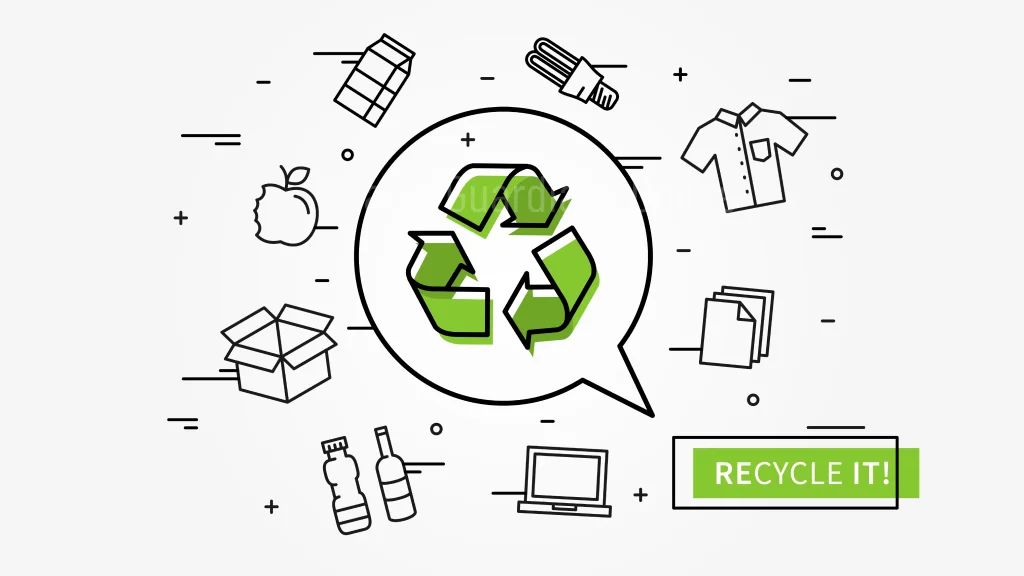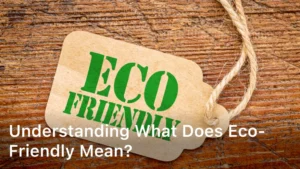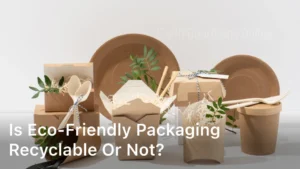earthguardiansonline.com. Does Eco-Friendly Mean Recyclable? Unraveling Green Terms – Does eco-friendly mean recyclable? Explore the nuances between these green terms as we delve into what truly defines sustainability in our latest article.
As consumers become increasingly aware of the environmental impact of their choices, terms like “eco-friendly” and “recyclable” are becoming more prevalent. However, there is often confusion surrounding the true meaning of these terms and how they relate to sustainability.
In this article, we aim to provide clarity on the relationship between eco-friendliness and recyclability, and the nuances of green terms. By understanding these concepts, we can make more informed decisions about the products we use and contribute to a greener future.
Table of Contents
ToggleDoes Eco-Friendly Mean Recyclable?
Key Takeaways:
- Eco-friendliness and recyclability are not interchangeable terms
- Both concepts are important to consider in sustainable decision-making
- Understanding the entire lifecycle of a product is crucial in evaluating its environmental impact
- Recycling plays a significant role in achieving a circular economy and reducing waste
- The complexities surrounding green terms require careful consideration and research
Defining Eco-Friendly
In this section, we will define what it means for a product or material to be considered eco-friendly. At its core, eco-friendliness refers to the ability of a product or material to minimize its impact on the environment while still fulfilling its intended purpose.
This can be achieved in a number of ways, including:
- Using sustainably sourced materials
- Reducing energy consumption during production
- Using environmentally friendly manufacturing processes
- Designing products for longevity and durability
- Using recyclable or biodegradable materials
Ultimately, the goal of eco-friendliness is to promote sustainability by minimizing waste and reducing the use of non-renewable resources. When evaluating whether a product is eco-friendly, it is important to consider its entire lifecycle, from production to disposal.
When it comes to environmentally friendly products, there are many options available on the market. From clothing made out of organic cotton to cleaning products that use natural ingredients, these products offer consumers a way to reduce their environmental impact without sacrificing quality or effectiveness. Choosing eco-friendly options can also contribute to a larger shift towards more sustainable practices in various industries.

Understanding Recyclability
Recycling is a crucial component of waste management and sustainability efforts, as it helps reduce waste and conserve resources. The process of recycling involves converting used materials into raw materials that can be used to create new products.
Recycling not only reduces the amount of waste going into landfills, but it also conserves energy and reduces the need for new raw materials.
In a circular economy, recycling plays a significant role in ensuring that materials are used and reused efficiently. This approach prioritizes the use of recycled and recyclable materials, with the aim of minimizing waste and extending the life cycle of products.
| Benefits of Recycling | Challenges of Recycling |
|---|---|
|
|
While there are numerous benefits to recycling, it is not without its challenges. Contamination of materials can render them unsuitable for recycling, and the high cost of processing can make recycling economically unviable. Additionally, a lack of recycling infrastructure and difficulty in recycling certain materials can limit the effectiveness of recycling efforts.
It is worth noting that not all materials are equally recyclable. While paper, glass, and metal are often readily recyclable, plastics present a more significant challenge due to variations in composition and contamination.
“Recycling rates for plastics vary widely depending on the type of plastic and the region. In the U.S., for example, only around 9% of plastic waste was recycled in 2018.”
Efforts to improve recycling rates must take into account the complexities of the recycling process and the limitations of current recycling infrastructure. However, by investing in innovative recycling technologies and improving waste management practices, we can make progress towards a more sustainable future.
Eco-Friendly vs. Recyclable: The Relationship
As we explored in previous sections, eco-friendliness and recyclability are two distinct concepts that contribute to sustainability. While it is ideal for a product to be both eco-friendly and recyclable, it is not always the case.
Some products may be considered eco-friendly due to their biodegradability or use of renewable resources. However, they may not be recyclable due to the lack of appropriate infrastructure or the complexity of the material composition.
On the other hand, some products may be recyclable but not necessarily eco-friendly, as they may still have negative environmental impacts in their production and disposal.
Therefore, it is essential to consider the entire lifecycle of a product when evaluating its sustainability. This includes not only its recyclability but also its environmental impact in production, use, and disposal.
Sustainable Alternatives
When choosing between eco-friendly and recyclable products, it is important to weigh the pros and cons and consider available sustainable alternatives. For example, if a product is not recyclable, we can look for alternative options made from biodegradable materials or from recycled content.
Another consideration is the durability and longevity of a product. Choosing a high-quality, long-lasting product can reduce the need for frequent replacements, thus decreasing waste and conserving resources in the long run.
The Importance of Recycling
While recyclability is not the only factor in achieving sustainability, it still plays an essential role in reducing waste and conserving resources. Recycling extends the life of materials and reduces the need for virgin resources, thus reducing energy consumption and greenhouse gas emissions.
It is important to dispose of recyclable materials properly and support the development of recycling infrastructure. This can include participating in municipal recycling programs or seeking out specialized facilities for specific types of materials.
In conclusion, while there may be overlap between eco-friendliness and recyclability, each plays a distinct role in achieving sustainability. By considering the entire lifecycle of a product and exploring available sustainable alternatives, we can make informed decisions and contribute to a greener future.
Conclusion
In conclusion, we have unraveled the relationship between eco-friendly and recyclable, shedding light on the nuances of these green terms.
While there may be overlap between the two, it is essential to recognize that each term encompasses distinct aspects of sustainability. By understanding the complexities involved, we can make more informed decisions and contribute to a greener future.
Choosing eco-friendly and recyclable products is just one part of the larger picture of sustainability. Being mindful of the entire lifecycle of a product is crucial to ensuring a more sustainable future for our planet.
By minimizing waste, conserving resources, and reducing our carbon footprint, we can all do our part to contribute to a green and thriving world.
Thank you for joining us on this journey to explore the relationship between eco-friendly and recyclable, and the intricacies of green terms. Let us continue to take steps towards a more sustainable tomorrow, together.
FAQ
Does eco-friendly always mean recyclable?
No, eco-friendly and recyclable are separate but related concepts. While many eco-friendly products may also be recyclable, it is not always the case. Eco-friendly refers to products or materials that are designed to have minimal negative impact on the environment. Recyclable, on the other hand, means that a product can be processed and reused after its initial use. Some eco-friendly products may not be recyclable due to certain materials or technological limitations.
What does it mean for a product to be considered eco-friendly?
Being eco-friendly means that a product or material is manufactured, used, and disposed of in a way that has minimal negative impact on the environment. This can include factors such as using renewable resources, reducing energy consumption, minimizing waste, and considering the entire lifecycle of the product. The goal of eco-friendly products is to promote sustainability and preserve natural resources for future generations.
What is recyclability and why is it important?
Recyclability refers to the ability of a product or material to be processed and reused after its initial use. Recycling is an important part of waste management and contributes to the development of a circular economy. By recycling materials, we can reduce the amount of waste sent to landfills, conserve resources, and minimize our environmental footprint. Recycling plays a vital role in sustainable practices and helps to create a more environmentally conscious society.
Can a product be eco-friendly but not recyclable?
Yes, it is possible for a product to be considered eco-friendly but not recyclable. Eco-friendly products focus on minimizing environmental impact throughout their lifecycle, which can encompass various aspects such as using renewable resources, reducing energy consumption, or being biodegradable. While recycling is an important component of sustainability, it is not the sole determinant of eco-friendliness. It is crucial to consider the entire lifecycle of a product, including its production, use, and disposal, in order to make informed choices regarding sustainability.
How do eco-friendly and recyclable contribute to sustainability?
Both eco-friendly and recyclable concepts contribute to sustainability in different ways. Eco-friendly products aim to minimize negative impact on the environment by considering factors such as resource conservation, energy efficiency, and waste reduction. Recyclable products, on the other hand, help to reduce the amount of waste sent to landfills by allowing materials to be processed and reused. By incorporating both eco-friendly and recyclable practices into our lifestyles, we can work towards a more sustainable future.









